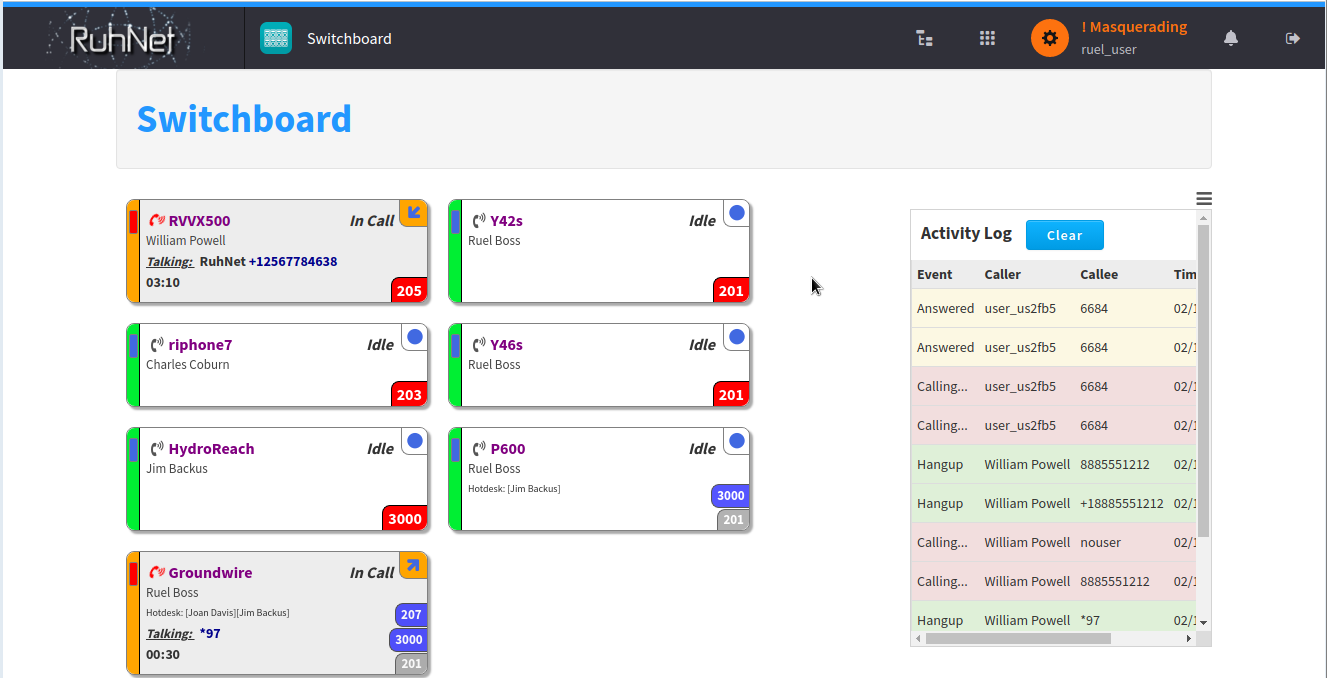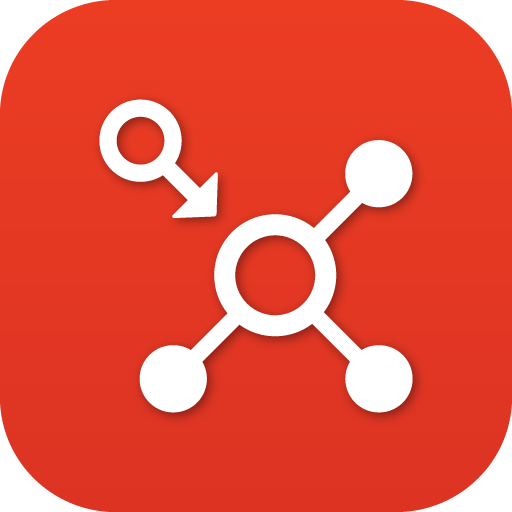Search the Community
Showing results for tags 'realtime call control'.
-
Hi all! I have released another Monster UI app that I think will be of use to some people. It is called Switchboard and is a real-time device/call monitoring app. You can view registered devices on the system, along with their owners, current extension, temporary hotdesk extensions. Call status of devices is updated in real time via websockets, along with an activity log, which can be collapsed if you don't need it. When the Switchboard app is first loaded, Crossbar APIs are queried to see which devices are currently registered, and then the channels API is used to set the current state of the devices. After that, websocket events via Blackhole update the devices visually as calls come in/out. You can see when a device rings, is idle, is answered, or is on hold., along with caller/callee name and number, call direction, and an in-call timer. https://ruhnet.co/blog/switchboard-kazoo-app-monster-ui Part of the reason I developed this app was for a client that uses a combination of hotdesking and normal extensions. Users and management were often confused about who was logged in where, and why they were getting calls for someone else (their device was hotdesked to another user and they forgot to logout). So, in addition to the real time call monitoring, this app gives a very clear visual indication of which devices are hotdesked, and which extension[s] are currently active on any particular device. Try it out and let me know what you think! Also, give me a GitHub star if you find it useful, and feel free to send pull requests if you make useful changes to the source code. I intend to continue development and add features over time.
-
What is Pivot? Pivot enables you to generate real-time KAZOO callflows via a REST API. This means your web application can tell phone calls what to do, during the call! Some examples use cases: Checking an external account balance before allowing a call Routing an incoming call based on custom logic Present menu items and respond to selections based on information in your database How does it work? When you add the Pivot module to your call flow, you provide Pivot with a callback URL to your webserver. From then on, when KAZOO receives a phone call for a Pivot-enabled phone number, KAZOO sends an HTTP request to your webserver asking it for a new callflow. Along with the request, KAZOO passes information about the call, such as the originating number. Your web application will then generate a new callflow, which KAZOO will run. Since your new callflow can itself contain another Pivot, you have the ability to make completely dynamic callflows. What does a request look like? When a call comes in to a configured Pivot number, we'll make a request to your web script with the following information: What does a response look like? When responding to the above request, your script might analyze the Caller ID of the caller and decide to identify the caller automatically and play their account balance, then connect them to customer support. Returned body: What are the variables for setting a Pivot Callflow? The dialog box for editing a callflow in Pivot is shown below: Is there a way to debug my Pivot routine? Yes. in the application there is a tab called Live Debug. It will list all recent calls that trigger a request to your http servier. If you click on "View Details" you can see the code that was both sent and returned. Is there a way to chain multiple Pivot requests together? Yes, it is possible to pass variables to multiple Pivot transactions. To do this you will want to use the set CAV (Custom Application Vars) option, and sent the results to a second Pivot. In the second Pivot add a query to see if a variable is set and access it that way.
-
- pivot
- realtime call control
-
(and 1 more)
Tagged with:
-
What is Pivot? Pivot enables you to generate real-time KAZOO callflows via a REST API. This means your web application can tell phone calls what to do, during the call! Some examples use cases: Checking an external account balance before allowing a call Routing an incoming call based on custom logic Present menu items and respond to selections based on information in your database How does it work? When you add the Pivot module to your call flow, you provide Pivot with a callback URL to your webserver. From then on, when KAZOO receives a phone call for a Pivot-enabled phone number, KAZOO sends an HTTP request to your webserver asking it for a new callflow. Along with the request, KAZOO passes information about the call, such as the originating number. Your web application will then generate a new callflow, which KAZOO will run. Since your new callflow can itself contain another Pivot, you have the ability to make completely dynamic callflows. What does a request look like? When a call comes in to a configured Pivot number, we'll make a request to your web script with the following information: What does a response look like? When responding to the above request, your script might analyze the Caller ID of the caller and decide to identify the caller automatically and play their account balance, then connect them to customer support. Returned body: What are the variables for setting a Pivot Callflow? The dialog box for editing a callflow in Pivot is shown below: Is there a way to debug my Pivot routine? Yes. in the application there is a tab called Live Debug. It will list all recent calls that trigger a request to your http servier. If you click on "View Details" you can see the code that was both sent and returned. Is there a way to chain multiple Pivot requests together? Yes, it is possible to pass variables to multiple Pivot transactions. To do this you will want to use the set CAV (Custom Application Vars) option, and sent the results to a second Pivot. In the second Pivot add a query to see if a variable is set and access it that way. View full File
-
- pivot
- realtime call control
-
(and 1 more)
Tagged with:




